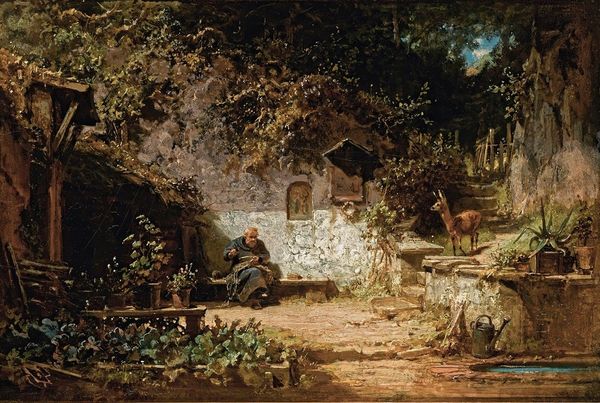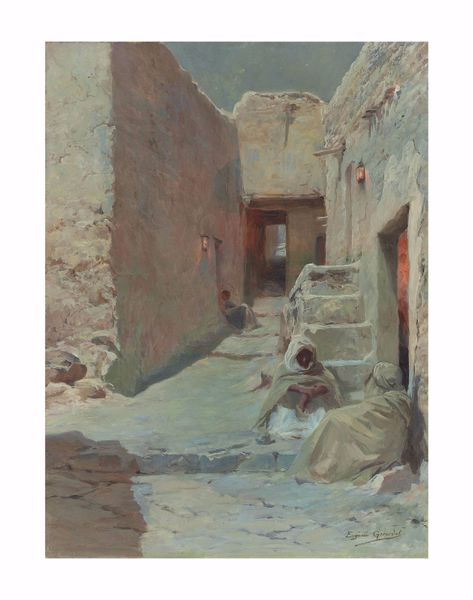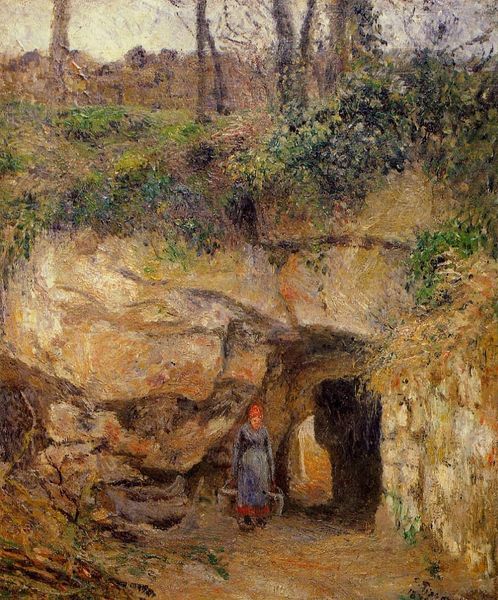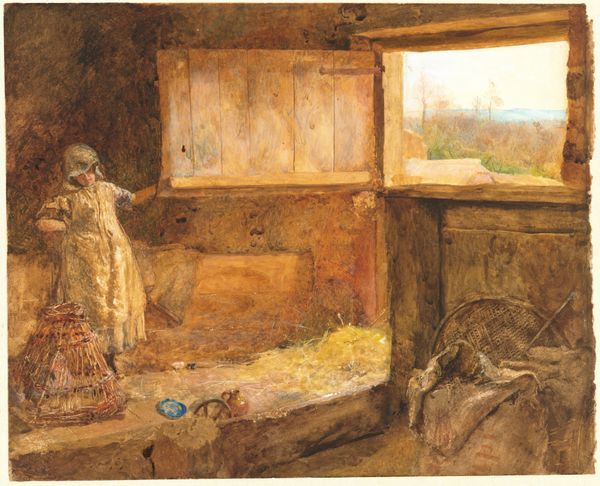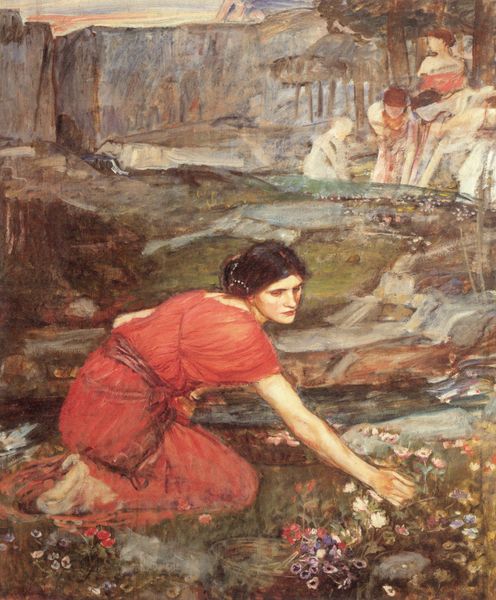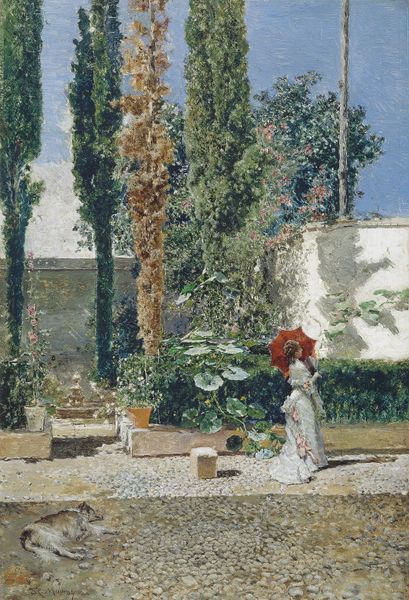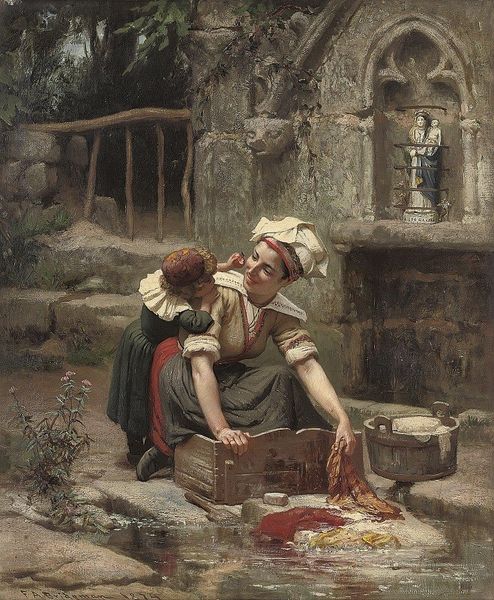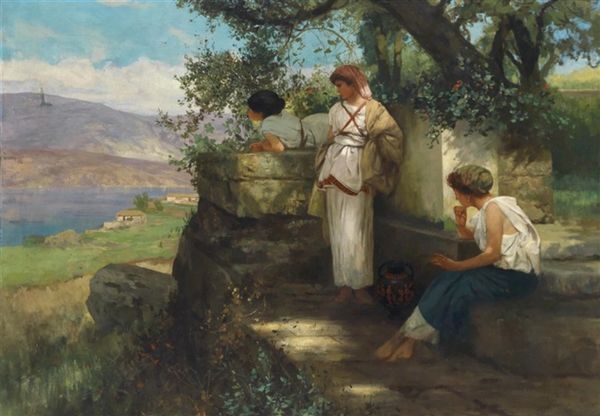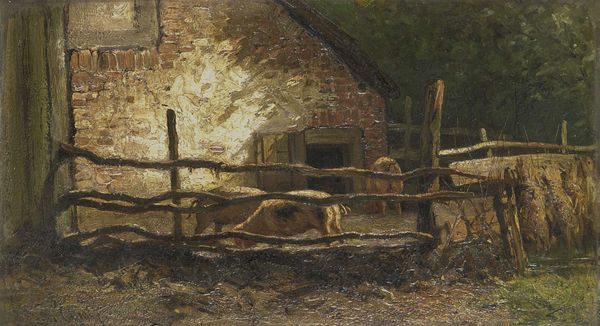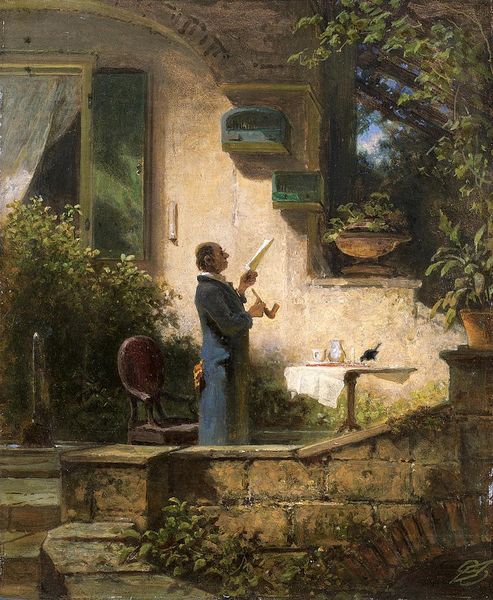
painting, plein-air, oil-paint
#
portrait
#
gouache
#
impressionist
#
painting
#
impressionism
#
plein-air
#
oil-paint
#
landscape
#
impressionist landscape
#
genre-painting
#
realism
Copyright: Public domain
Editor: This is Elin Danielson-Gambogi’s "Bykerskan", an oil painting that seems to capture a fleeting moment. The woman washing clothes—the textures of the stone and the fabric… they feel so tactile. What catches your eye about it? Curator: For me, it's the emphasis on the labor itself. Look at the stone, the well-worn surface – these materials speak to a specific context, a working environment. We need to consider how the artist has represented the means of production, the labor involved in textile maintenance. Where does the artist place our attention in terms of labor? Editor: That’s a perspective I hadn’t considered. I was caught up in the almost Impressionistic light. So, the fact that she is working is central to your reading? Curator: Precisely. The "impressionistic" light, as you put it, shouldn't distract us from the stark reality depicted. Washing laundry was arduous work and the artist is deliberately highlighting a mundane, but vital, material process. Are we meant to glamourize, pity or understand the place of female labour at this historical moment? Editor: I see your point. The painting isn’t just a pretty scene, it's about this woman’s labor, her daily reality mediated through oil paint and canvas. What do you make of the rough, almost unfinished quality of the stone compared to the smoother rendering of her clothes? Curator: The contrast could highlight the repetitive, grinding nature of labor versus the soft promise of clean linens, hinting at consumption. The artist emphasizes the textures and materials which subtly underlines her role within the domestic economy. It asks the question what relationship does labor and materiality hold for art itself? Editor: This has really changed my perception. I came in seeing light and color, and now I’m thinking about labor and materials. Curator: Exactly! It's about peeling back the layers and interrogating the relationship between representation, materiality and the everyday.
Comments
No comments
Be the first to comment and join the conversation on the ultimate creative platform.
